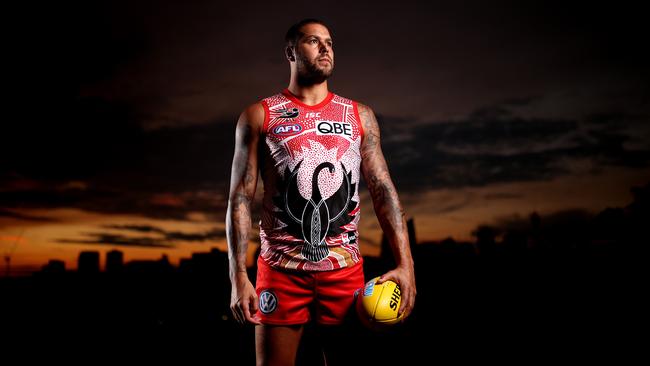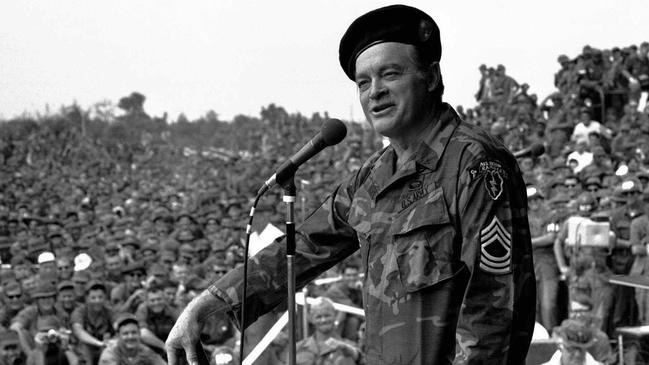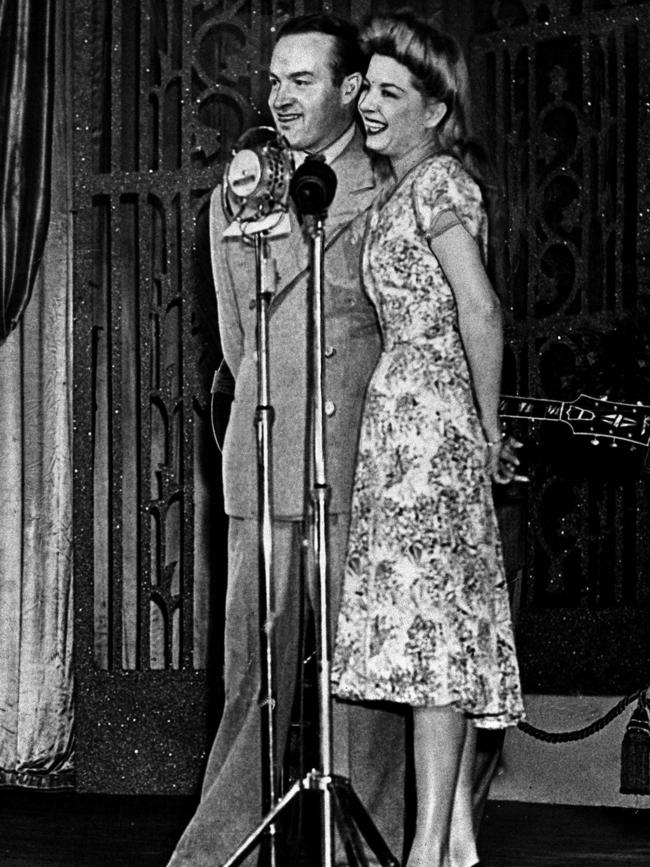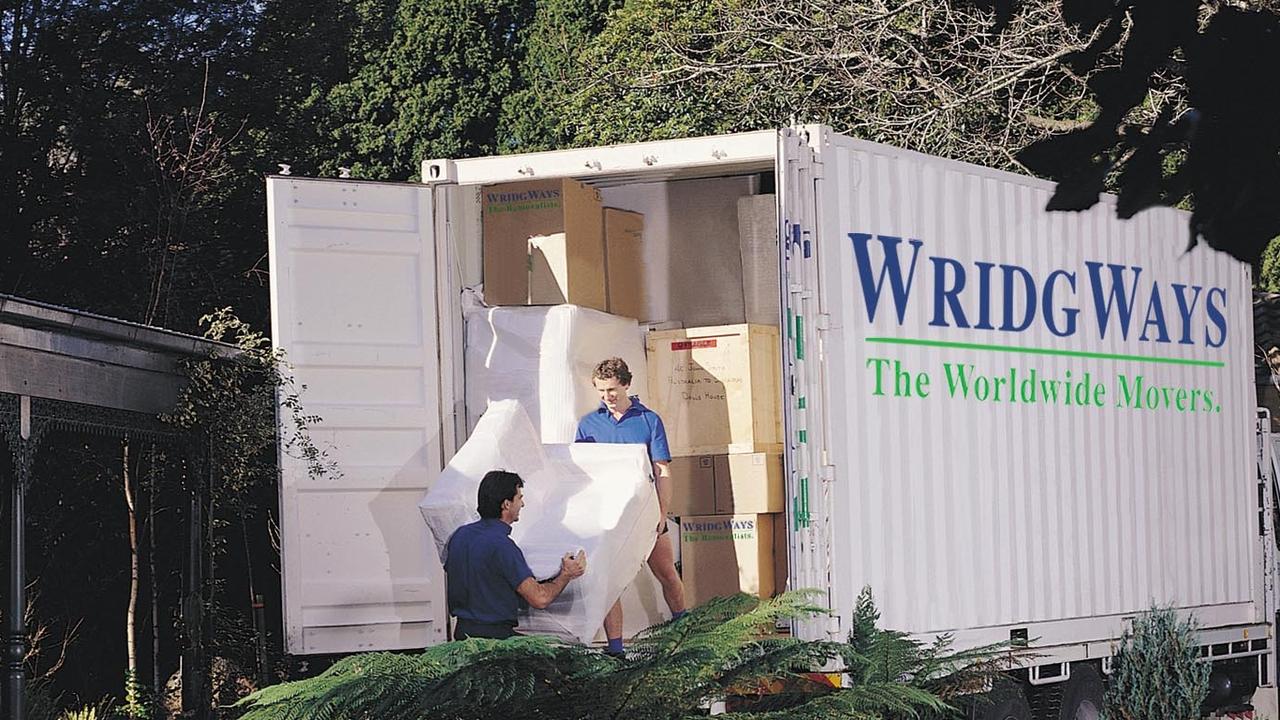Like war-time entertainers, a game of footy could make all the difference
Aussie rules is much more than a game, it’s a cultural icon, and AFL players can help lift the nation’s morale, writes Simon Bevilacqua.
News
Don't miss out on the headlines from News. Followed categories will be added to My News.
THE suggestion this week for the AFL to resume its season in quarantine hubs infuriated some as an unfair imposition on players and an extravagance in oppressive times when so many are being asked to surrender so much.
On face value, hubs appear frivolous compared to the grim gravity of the pandemic. Fun in such dour times somehow seems wrong — but only if you consider Aussie rules merely as a game. And it is so much more.
AFL is a business. A big one. Each of the 18 clubs operates under a salary cap of about $13 million. The average player — many of whom did not finish school — rakes in an annual wage of $371,000.
Stars like Sydney’s Lance “Buddy” Franklin, pictured, are paid more than $1 million a season. In 2013, Buddy signed a $10 million deal over nine years with the Swans. The mercurial forward is among 70 Aboriginal players in the AFL, representing 10 per cent of big-league players. Indigenous Australians, however, make up only 2.5 per cent of the population. No other business allows Aboriginal men to pull in such big money, make a name on the national stage and set themselves up for life.

It’s not easy money either. Players train at elite levels of fitness and athleticism, endure intense pressure, cope with media scrutiny and risk serious injury on a weekly basis. It takes bravery, sacrifice, commitment and discipline.
The AFL generates most of its wealth by selling the TV rights to games. The 2017-2022 rights were re-bought by Foxtel, Seven West Media and Telstra for $2.5 billion. This massive investment has been frozen in lockdown. There is no footy on TV aside from replays. Even the biggest businesses can’t absorb such losses without real human consequences. Collingwood president Eddie McGuire reckons the league and clubs stand to lose more than $500 million due to the lockdown.
Last year, there were a record 1,057,572 AFL club members, most of whom will have forked out again this season to go to games and buy merchandise such as scarfs and guernseys. None has been to a game this season. Nor have millions of other fans who are not members.
If it is safe to stage televised games — without fans and with players and officials in isolation hubs under strict medical guidance — there is an economic imperative to do so. This is a valuable Australian industry that generates wealth and economic activity at our nation’s grassroots.
But here’s the rub — Aussie rules is far more than just a game and a multibillion-dollar industry. It’s a cultural icon, a uniquely Australian obsession.
Aussie rules is about tribes, acceptance and community, legend and history, pride and passion. For players, it is about realising childhood dreams and making lifelong memories of shared triumph and woe.
Aussie rules lore is greater than the sum of its parts. Its stories and traditions galvanise and exalt, and can be a potent force for good, with lessons in valour, fairness, loyalty, loss, acceptance and honour.
Think of the contribution of Essendon and Melbourne legend Neale Daniher in raising awareness about motor neurone disease; indigenous St Kilda winger Nicky Winmar’s stand against racism and Swans great Adam Goodes’s tragic retirement; Irish Brownlow medallist Jim Stynes’s struggle with cancer; and the league’s long fight with homophobia and other discrimination.
Think of the courageous tale of Hawthorn’s Robert DiPierdomenico, who played out the 1989 grand final with a broken rib and punctured lung.
These myths and legends, and their inherent life lessons, endure through decades like the thigh-slapping club songs the players bellow after a win.

THERE is a priceless opportunity for our great game to entertain frontline troops, as Bob Hope, Bing Crosby, Bette Davis, Frank Sinatra and Marlene Dietrich did amid the misery and loss of World War II.
During that war, the biggest celebrities of the day regularly performed on stages erected near battle fronts to lift the spirits of Allied servicemen.
This time around, however, the troops are ordinary Aussies confined at home in everyday neighbourhoods, who are being stretched to breaking point by fear, anxiety and the disruption of social distancing and isolation in a protracted fight against an invisible viral enemy.
AFL telecasts could lift the morale of millions watching TV in their lounges and, in doing so, galvanise their resolve to sit this threat out to the bitter end.

The AFL knows how to sell a message and could assist the nation in staying the course. I dare say the PM would like to say a word or two at halftime too.
The telecasts could let viewers forget about the wolf at the door for a few hours, and smile defiantly, despite all the calamity. In WWII this was known as keeping a stiff upper lip.
The telecasts could be the stuff of legend, and the deeds of players who answer duty’s call could be celebrated in history. But hubs should be voluntary. Any who do not want to play should be allowed to stay home. Hubs should go ahead only if medically safe. Health and management experts should dictate how they operate.
Of course, live telecasts of pandemic hub games will not be everyone’s cup of tea — some among us cannot bear the sight of footy.
I’m sure some troops failed to laugh at Bob Hope’s blokey jokes too. Nonetheless, I bet his jocular banter inspired a welcome sense of camaraderie among those who fought beside each other in the trenches.


